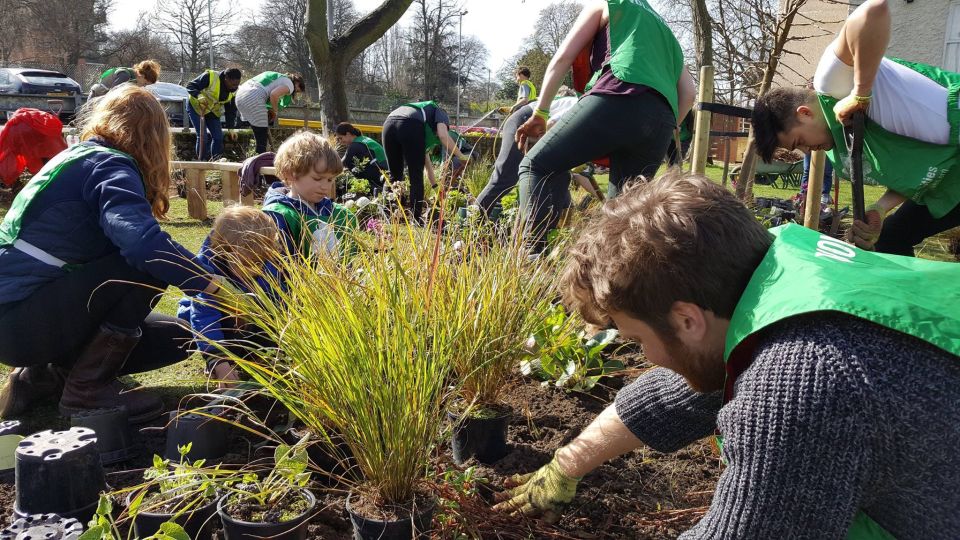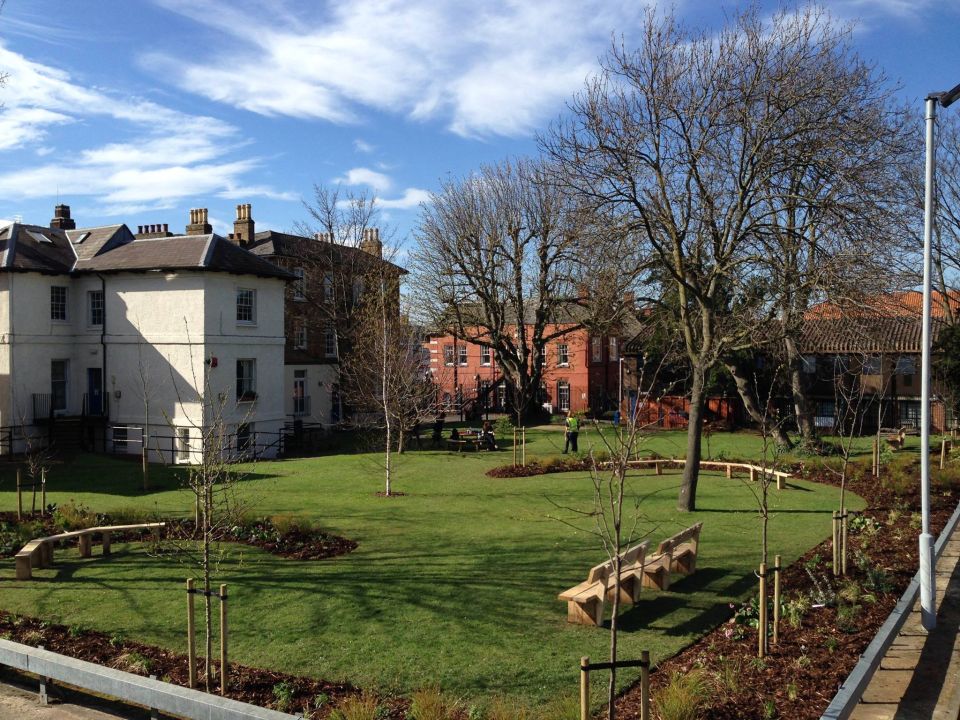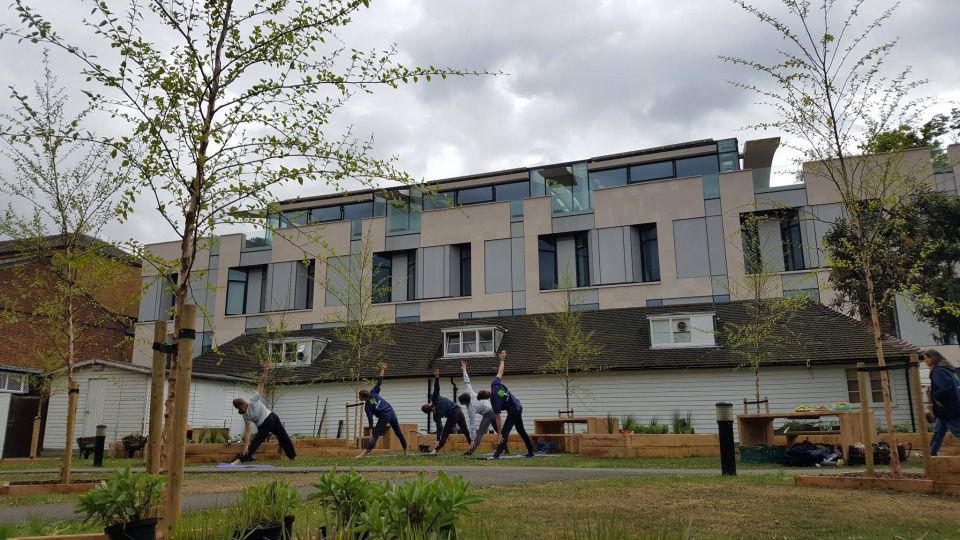Urban trees
Horticultural Therapy Garden
Maudsley Hospital, South London
In partnership with the South London and Maudsley NHS Foundation Trust, we transformed the outdoor spaces at the hospital in Camberwell into a beautiful new public garden, designed to improve community wellbeing by creating a safe, restful and peaceful space for relaxation, reflection and wellbeing activities.
Background
Maudsley Hospital is a large psychiatric hospital in Camberwell, providing in-patient and community mental health care to thousands of people across the country. Part of the South London and Maudsley NHS Foundation Trust (SLaM), it is also a contributor to psychiatric research and the largest mental health training institution in the UK.
Prior to this project, the hospital’s outdoor spaces mainly consisted of bare open amenity grass with a few large trees and shrubs. There was a severe lack of biodiversity, colour and visual interest making the spaces feel bland, uninspiring and, as a result, underused. Through this project and the planting of trees, sensory plants, and the provision of natural features across the campus, we wanted to ensure Maudsley Hospital is able to provide abundant opportunities for all visitors for relaxation, horticultural therapy, socialising and much more.

Community engagement
The local community was involved in the project from start to finish, engaging in consultation and volunteering activities throughout. Trees for Cities began consultation in the local area in July 2016, holding community drop-in sessions, surveys and consultation meetings where local people were able to feedback their ideas for the greening project.
Our main community planting event took place on the 25th of March 2017. 49 people came out on the sunny Saturday to plant hundreds of sensory and flowering plants and complete the mixed fruit orchard of 12 trees. The volunteers were a mix of local people from the hospital community, including residents, service users and Occupational Therapists as well as regular Trees for Cities volunteers. Earlier in the same week, nearly 50 pupils from Lyndhurst Primary School also joined Trees for Cities during two planting workshops to help plant some of the fruit trees at the orchard.
To complete the rest of the planting in the central hospital courtyard, including the planting of 17 River Birch trees and hundreds of sensory plants, we held several weekday planting workshops with the local community, including hospital service users. A total of 1,118 flowers, plants and shrubs were planted through the hospital, chosen for their sensory value and ability to attract pollinators including butterflies, moths and other insects (e.g. Mahonia eurybracteata, Bergenia 'Overture', Bergenia 'Silverlight', Echinacea purpurea, Viburnum × juddii).
How fabulous the planting project is happening! As Head of Occupational Therapy for the Trust this project is a great way to create environments on the site that people would like to be in. The interaction between an individual, their environment and their meaningful occupation is all important in facilitating health and wellbeing. I am sure the occupational therapists who work here will welcome fresh and engaging outdoor spaces that provide that sense of wellbeing for the people they are supporting with their recovery as well as staff and members of the public.
Gabrielle Richards, Professional Head of Occupational Therapy and Trust Social Inclusion & Recovery Lead

Tranquil design
The spatial outlay for the orchard design was based on three spirals. The seating areas were designed within the spirals and outer beds, whilst the sensory plants create screens between the seating areas to provide privacy and evoke calmness and relaxation. Planting has been placed on the eastern and southern boundary to create a green screen as well as provide privacy from the car park. The planting will also help mitigate noise and pollution from the adjacent trainline as well as heavy road traffic on Denmark Hill and Champion Park Road.
The central courtyard garden echoes the orchard in its colour and sensory scheme. The design was based on a gentle grid formation which subtly repeats across the gardens and aids in drawing visitors away from the main path and into the open and inviting gardens. The picnic tables, benches and plant beds have been constructed of oak and have been fixed in situ. The shade from the trees will provide an additional respite for visitors when taking a break in the garden. The special mix of trees and plants will not only support biodiversity but provide an array of interesting smells, colours and textures to create a calming, sensory space for people to enjoy.

It's very relaxing and therapeutic and it's so good to see how much the area changes, it looks amazing!
Volunteer
Donate to Trees for Cities and together we can help cities grow into greener, cleaner and healthier places for people to live and work worldwide.
Donate